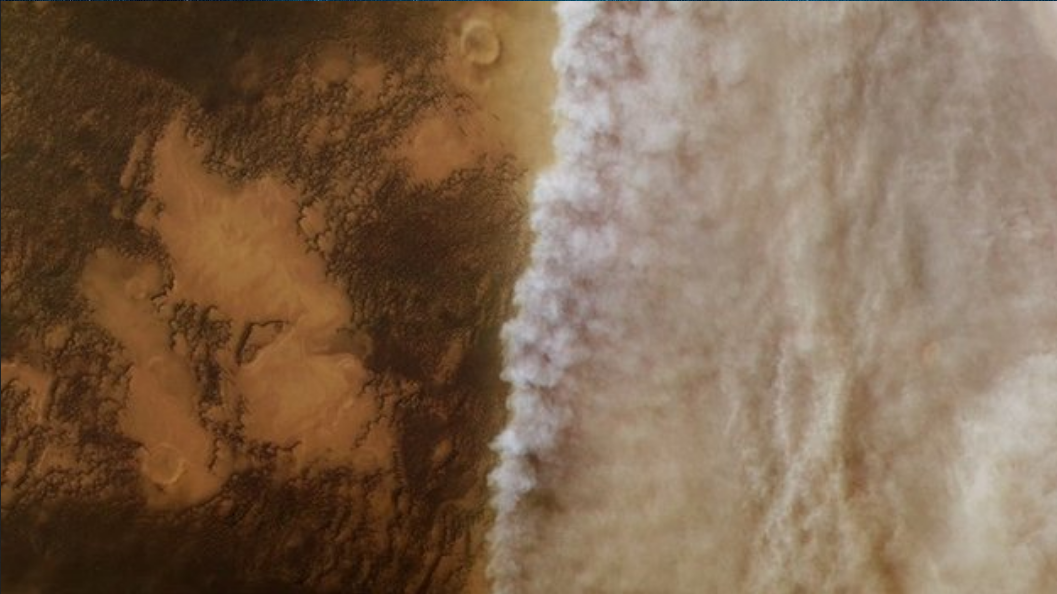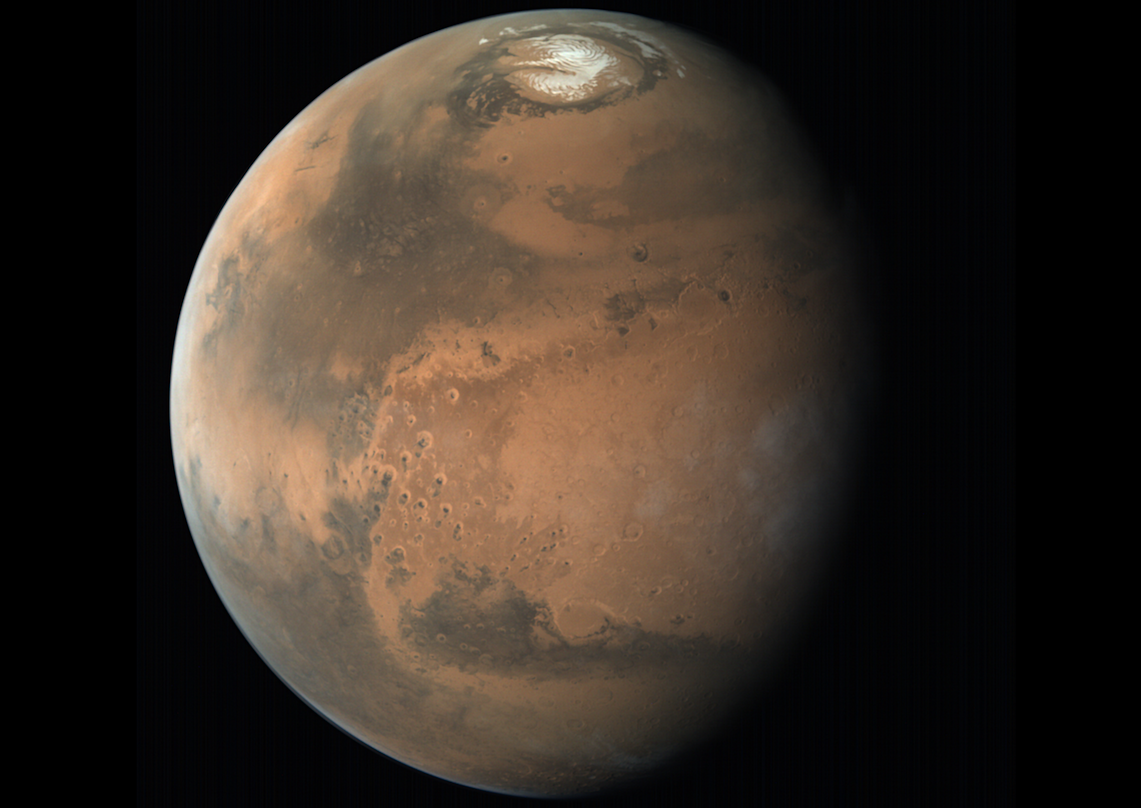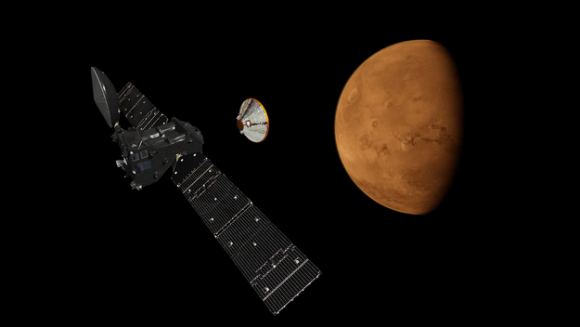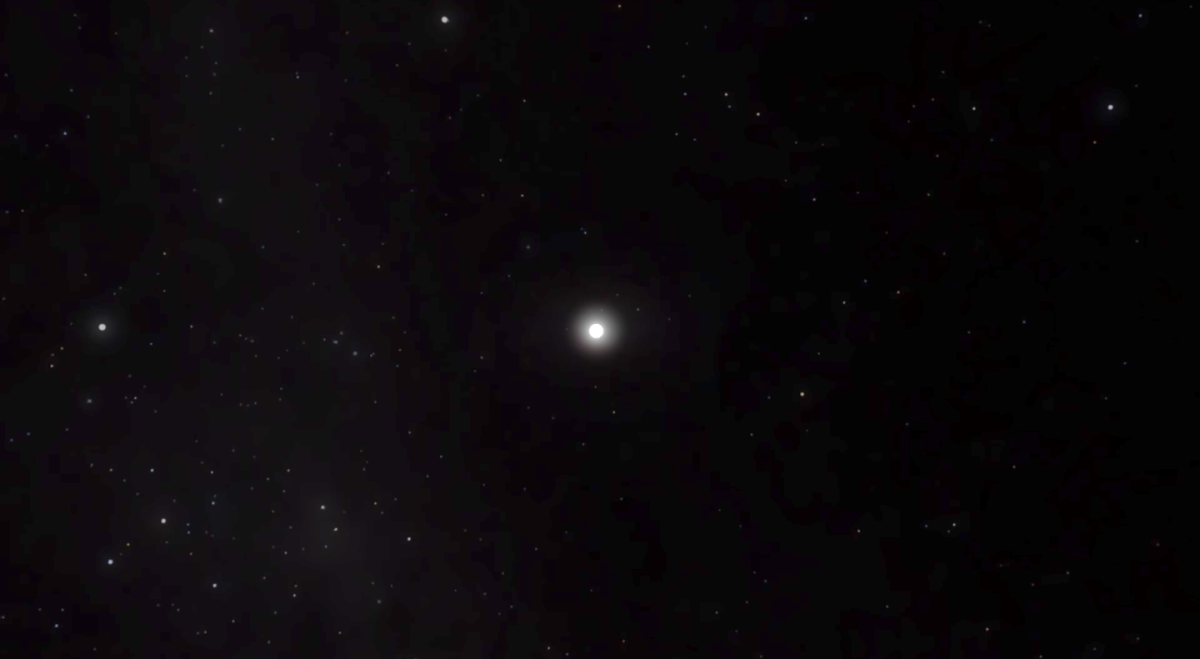Your daily selection of the latest science news!
According to ESA Top News (This article and its images were originally posted on ESA Top News July 19, 2018 at 06:42AM.)
(Cover Image) Mars dust storm
The high resolution stereo camera on board ESA’s Mars Express captured this impressive upwelling front of dust clouds – visible in the right half of the frame – near the north polar ice cap of Mars in April this year.
It was one of several local small-scale dust storms that have been observed in recent months at the Red Planet, which is currently enduring a particularly intense dust storm season. A much larger storm emerged further southwest at the end of May and developed into a global, planet-encircling dust storm within several weeks.
The intensity of this major event means very little light from the Sun reaches the martian surface, a situation extreme enough that NASA’s 15-year old Opportunity rover has been unable to recharge its batteries and call home: it has been in hibernation mode since mid-June.
Dust storms on Mars occur regularly during the southern summer season when the planet is closer to the Sun along its elliptical orbit. The enhanced solar illumination causes stronger temperature contrasts, with the resulting air movements more readily lifting dust particles from the surface – some of which measure up to about 0.01 mm in size.
Martian dust storms are very impressive, both visually like in this image and in terms of the intensity and duration of the rarer global events, but they are generally weaker compared to hurricanes on Earth. Mars has a much lower atmospheric pressure – less than one hundredth of Earth’s atmospheric pressure at the surface – and martian storms have less than half the typical wind speeds of hurricanes on Earth.
The current storm is being monitored by five ESA and NASA orbiters, while NASA’s Curiosity rover has been observing it from the ground thanks to its nuclear-powered battery. Understanding more about how global storms form and evolve will be critical for future solar-powered missions to Mars.
This colour image was created using data from the nadir channel, the field of view of which is aligned perpendicular to the surface of Mars, and the colour channels of the high-resolution stereo camera. The ground resolution is approximately 16 m/pixel and the images are centred at about 78°N/106°E.
Mars Express is also equipped with the Visual Monitoring Camera that captures daily images of the Red Planet.
Continue reading… | Stay even more current with our live science feed.
- Got any news, tips or want to contact us directly? Feel free to email us: esistme@gmail.com.
To see more posts like these; please subscribe to our newsletter. By entering a valid email, you’ll receive top trending reports delivered to your inbox.
__
This article and its images were originally posted on [ESA Top News] July 19, 2018 at 06:42AM. All credit to both the author and ESA Top News | ESIST.T>G>S Recommended Articles Of The Day.












